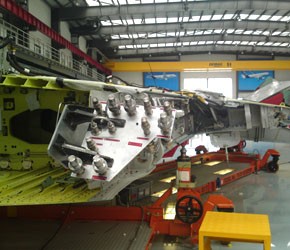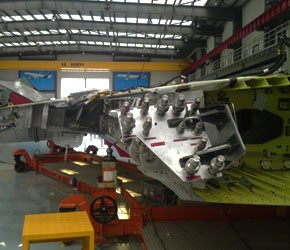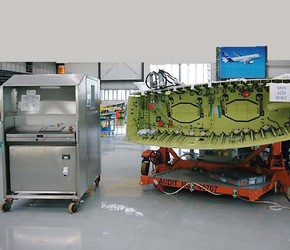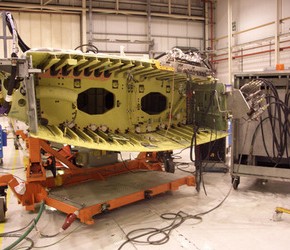Hydraulic Test Equipment > Flushing Test Rig > The Importance of Flushing
Introduction to Contamination Removal
Particle contamination results in 70% of failures of hydraulic and lubrication systems
A study by Doctor E. Rabinowicz at M.I.T. observed that 70% of component replacements
or �loss of usefulness� is due to surface degradation. In hydraulic and lubricating
systems 20% of these replacements result from corrosion with 50% resulting from mechanical
wear.
Presented at the American Society of Lubrication Engineers, Bearing Workshop 1981
Most machines that fail during early service and commissioning fail because the systems
components were not properly flushed clean before fitment.
1/ Built in contaminant from components: cylinders, fluids, hoses, hydraulic motors,lines and pipes, reservoirs, valves, et cetera
2/ External ingression: reservoir breathing, cylinder rod seals, and bearing seals
3/ Generated contaminants: assembly of system, operation of system, break in system and fluid break down.
4/ Contaminants introduced during maintenance: disassembly/assembly and make up oil.
Pumps, valves and components with fine dynamic tolerances do not recover if they are
initially subject to particle contamination during initial start-up.
The most common cause of failure of new machines results from debris left in the pipes
from manufacture and assembly.
Debris can be flushed out of pipes, reservoirs and components before they are fitted or used.
|
Typical Critical Clearances for Fluid System Components |
|
|
Item |
Typical Clearance Micrometres |
|
Gear Pump (pressure loaded) |
|
|
►Gear to slide
plate |
0.5
- 5 |
|
►Gear Tip to
case |
0.5
- 5 |
|
Vane Pump |
|
|
►Tip of Vane |
0.5
� 1* |
|
►Sides of vane |
5
� 13 |
|
Piston Pump |
|
|
►Piston to Bore
R� |
5 - 40 |
|
►Valve Plate to
Cylinder |
0.5 - 5 |
|
Servo-valve |
|
|
►Orifice |
130 - 450 |
|
►Flapper Wall |
18 - 63 |
|
►Spool-Sleeve
R� |
1 - 4 |
|
Control Valve |
|
|
► Orifice |
130 � 10,000 |
|
► Spool-Sleeve
R� |
1 - 23 |
|
►Disc type |
0.5 � 1* |
|
►Poppet Type |
13 - 40 |
|
Actuators |
50-250 |
|
Hydrostatic Bearings |
1-25 |
|
Anti-Friction Bearings |
0.5* |
|
Sleeve bearings |
0.5* |
|
|
|
|
*Estimated for thin lubricant oil |
|
|
�Radial clearance |
|
|
A micrometre (micron)�m = 0.000,039 inch or 0.001mm |
|
Original equipment manufacturers (OEMs) are setting ever higher standards of cleanliness for
all piece parts and pipes before they are fitted to machinery.
To achieve these levels of cleanliness very high flushing velocity is needed adopting very
efficient test equipment, filters and fluids capable of removing and retaining debris extracted
from pipes and components tested cost effectively.
Flushing of pipes and components in a production environment in the shortest possible time has
become a necessity for many suppliers of equipment that must be verified by instrumentation.
Bonaprene Fluid Power have designed and manufactured a variety of special purpose flushing and
pressure test rigs that enable suppliers and OEMs to meet current cleanliness standards and
reach the new standards being set.
On initial start-up of the machine, when the oil is cold and viscose, only the large pieces of
debris get shunted around the system. Providing that the system filter is not on �cold start by
pass�, these large bits start to get arrested.
However, as the system works the oil warms up.
The oil now start to become much thinner and the static film of fluid on the walls of the pipes
starts to release the higher concentration of debris that was sticking to the pipes.
The debris in the fluid starts to flow into the areas that are working at pressure and are
commonly where fine dynamic clearances exist that need to be lubricated.
The debris initially left from manufacture then starts a chain reaction of wear. More debris is
created and the components are now going to have a shortened life expectancy and the higher the
amount of debris the shorter the life expectancy of the system.
The debris can actually be terminal for some systems within minutes of start-up.
The solution is effective flushing at very high velocity.




